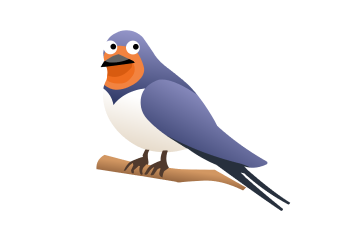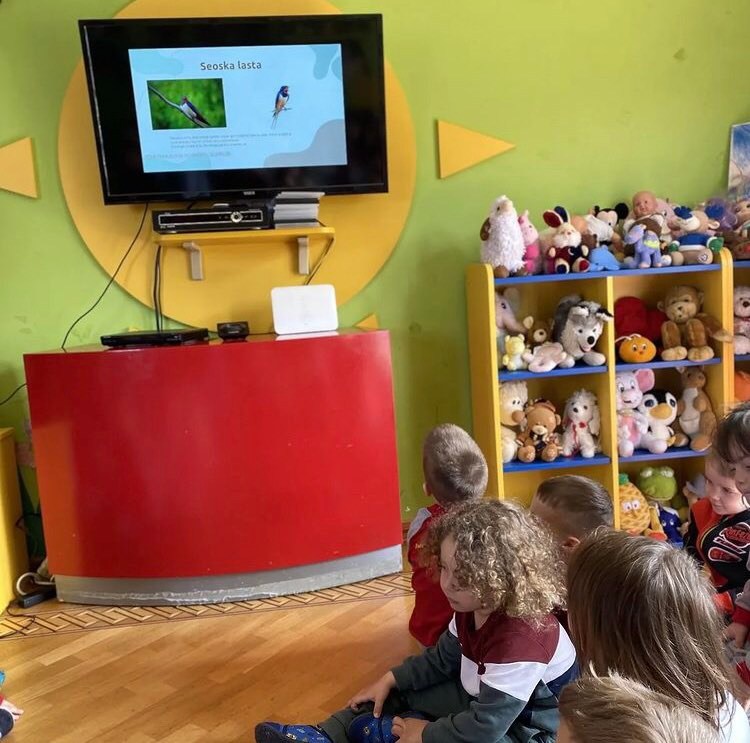
07 / 04 / 2023
Svjetski dan lasta - 19. mart
Dan lasta - 19. mart

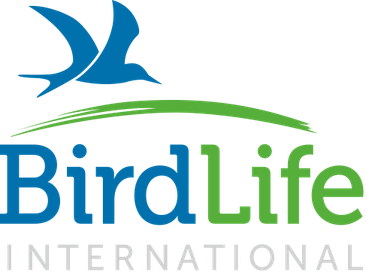
Barn Swallows are one of the most popular and familiar birds in the world. Let's meet them! :)
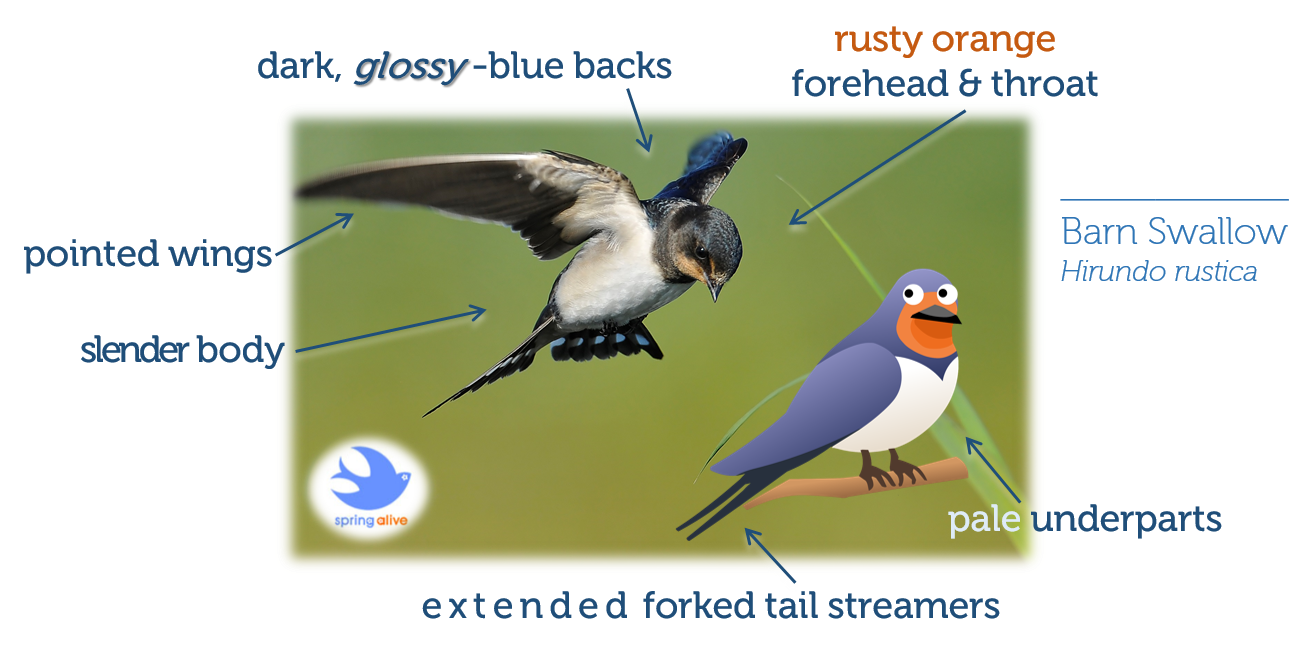
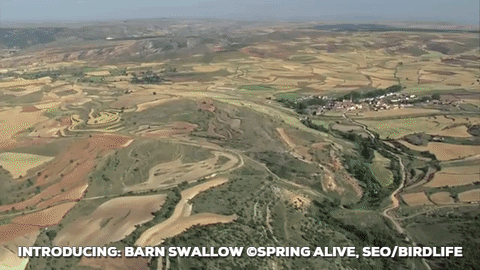
Use this handy guide from the BBC Nature to help you identify these four similar migratory species - all of which are excellent flyers and a joy to watch!
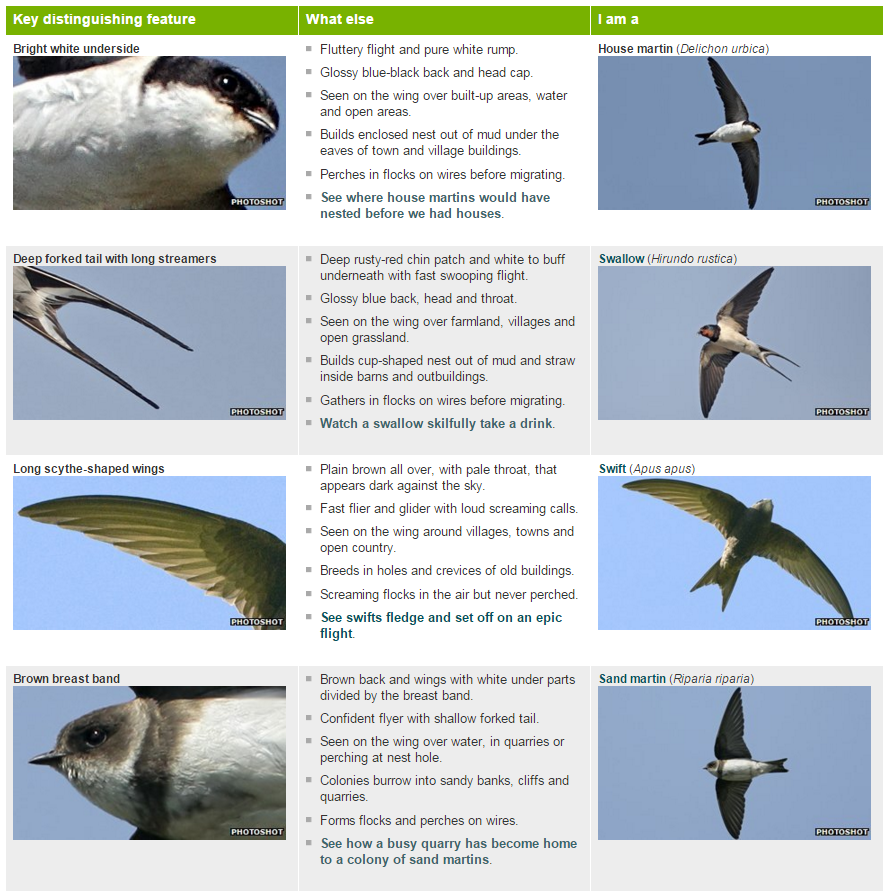
Source: http://www.bbc.co.uk/nature/22527420
More tips from the RSPB on identifying
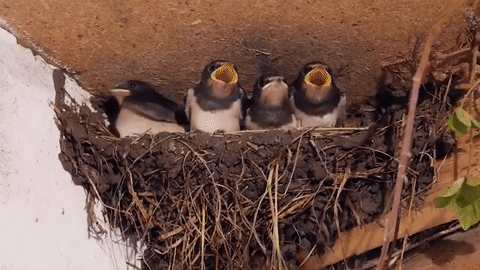 |
| Let's be nice and respectful neighbours for them! © SEO |
Swallows used to breed in caves and in cliffs, but now seem to have adopted humans as neighbours - building their nests under bridges or in buildings such as farm barns (hence the name), garages and even in busy restaurants - meaning that the bird is one of the most familiar bird species in the world! It is now rare to find a Barn Swallow nest in a site that is not manmade. Their nests are a bowl of mud and grass, lined with feathers.
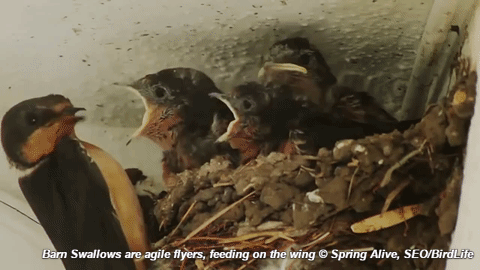 |
Swallows are small migratory birds often seen skimming low over fields with a fast, flowing, graceful flight. They mostly capture their food in the air, but in bad weather sometimes feed on the ground.
 |
Swallows are friends of farmers because they tirelessly scour the countryside to eat lots of insects which would otherwise eat crops. Swallows eat many flies, beetles, wasps, wild bees, winged ants, true bugs; some moths, damselflies, grasshoppers, and other insects; and a few spiders and snails. Only occasionally they eat a few berries or seeds. The number of chicks that swallows successfully raise gives an indication of how healthy the environment is: more food available = more chicks raised!
Swallows are migratory, meaning they fly huge distances between breeding and wintering grounds in the Spring and the Autumn. Swallows have the power to connect people together for conservation along their migrations - such as with Spring Alive's "Spring Twin" programme.
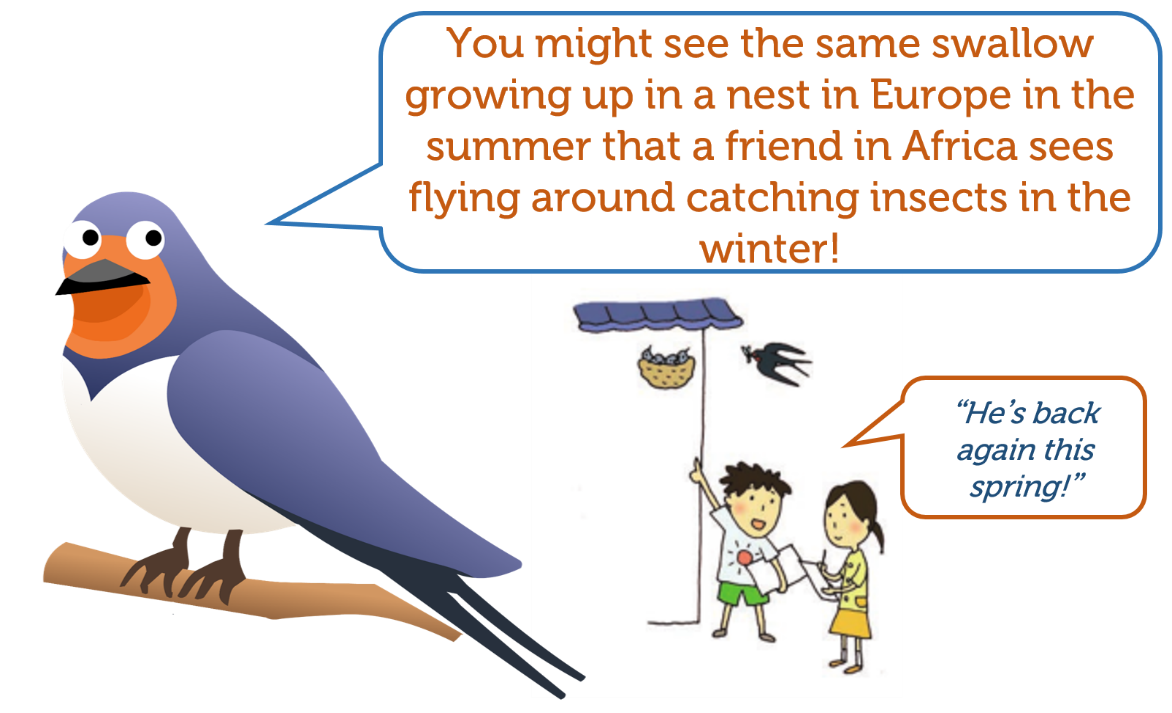 |
| © WBSJ / Spring Alive |
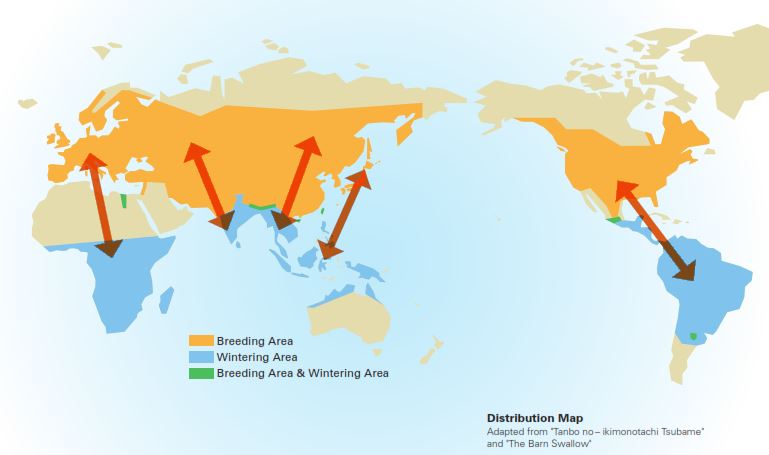 |
| © WBSJ, adapted from "Tanbo no ikimonotachi Tsubame" and "The Barn Swallow" (Life in the paddy field - Barn Swallow, Kazuo Koyama, Nobutoshi Sato, Hitoshi Watanabe, published by Nobunkyo, Tokyo 2012) |
 |
| © WBSJ; Illustrations by Minori Kataoka |
Find out more about Barn Swallows, their migrations and listen to the calls they make!
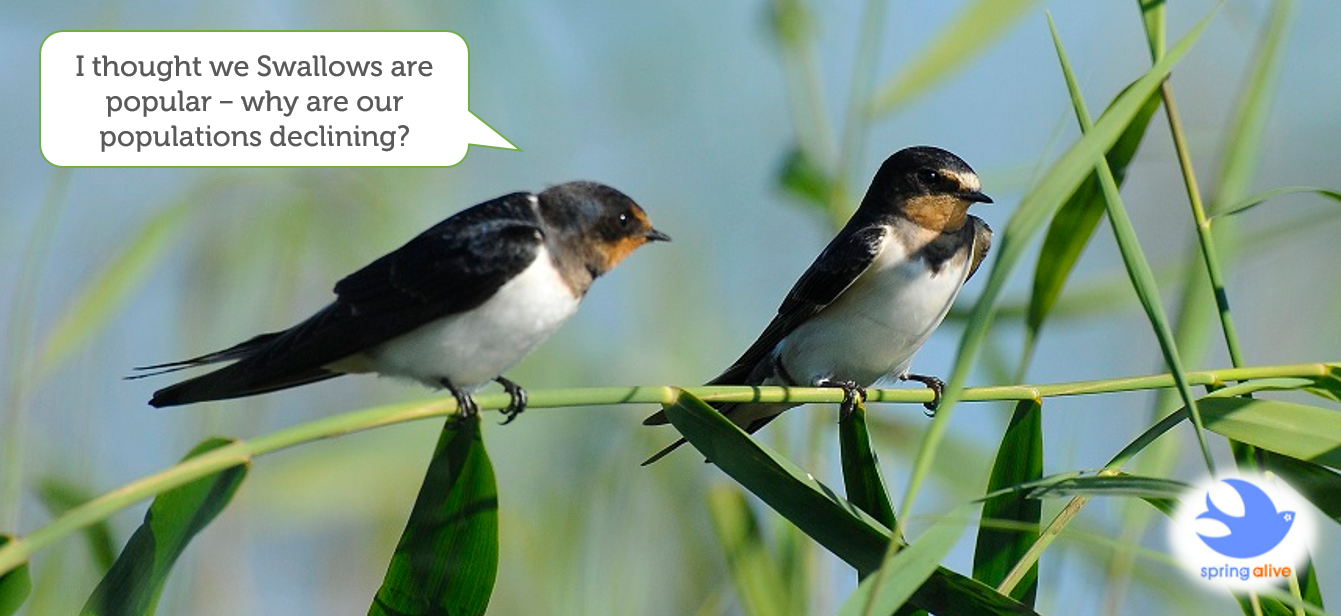 |
| © Cezary Korkosz |
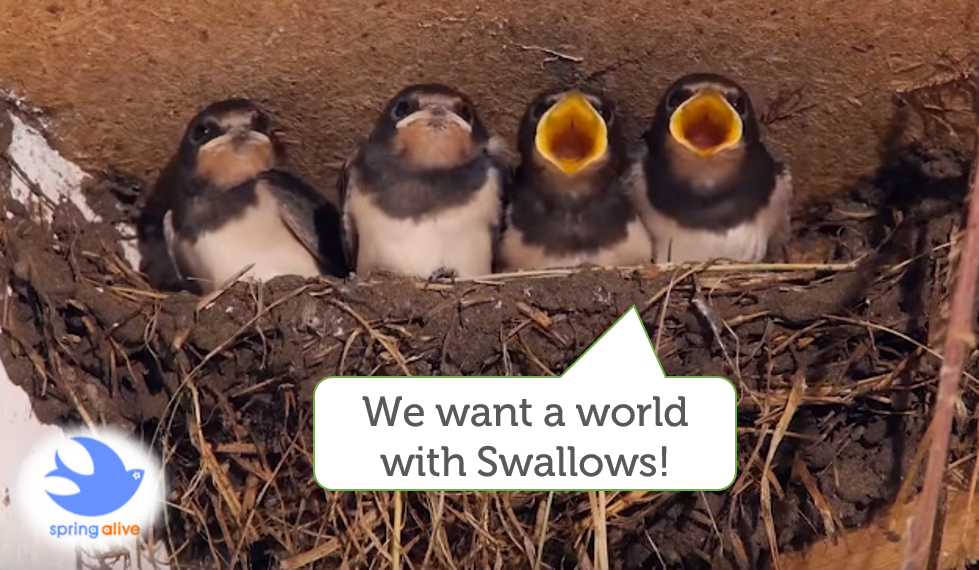 |
| © SEO |
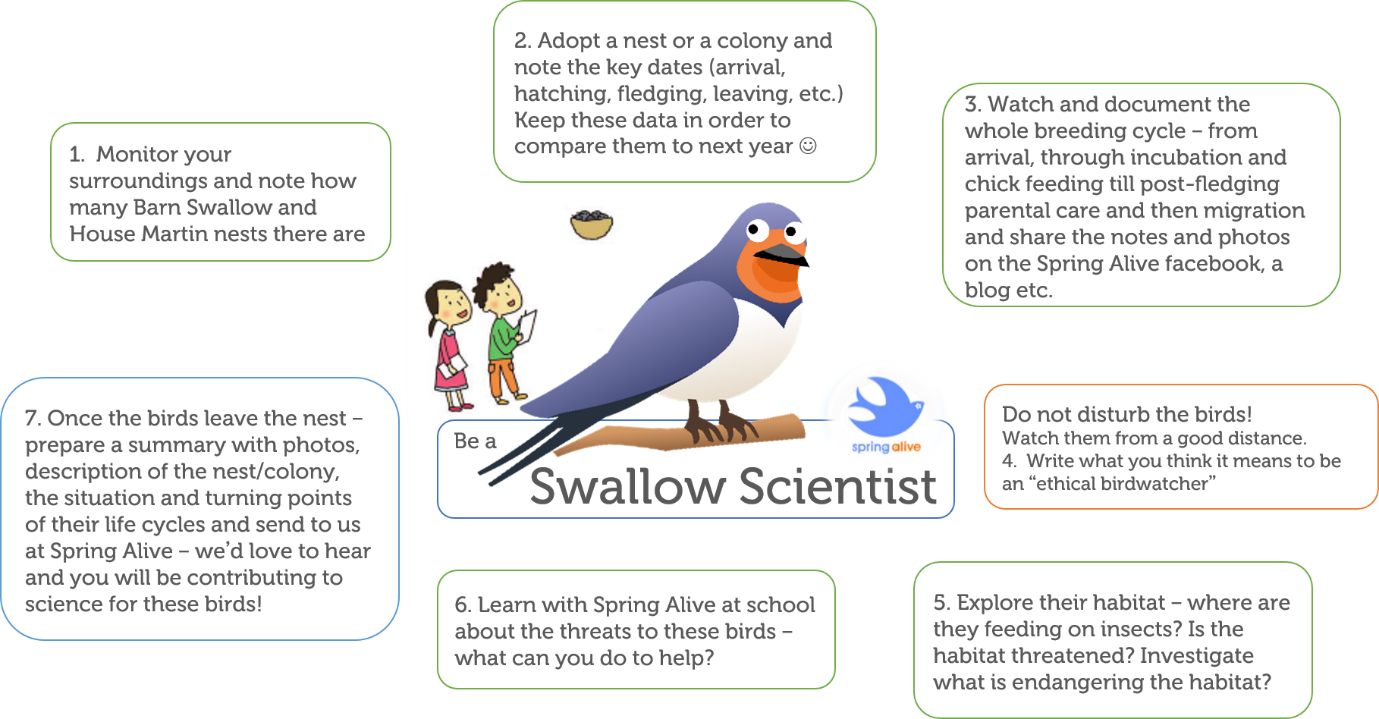 |
As well as eating insects in your neighbourhood, Swallows and House Martins are amazing to watch flying and nesting, and have had a great connection with humans for a long time. How can we return the favour?
Helping them nest without disturbing them:
| Swallows | House Martins | ||||
|---|---|---|---|---|---|
| Encouraging nesting | Encouraging nesting | ||||
| Helping broken nests | Helping broken nests | ||||
Buy or build a nest
|
Advice if people want to prevent House Martins from nesting:
|
Some people think that having these special birds nest in the houses or buildings are a nuisance and make a mess!
You must tell them that about how amazing Swallows and House Martins are, how they are declining and how they need to be our welcomed guests. Also, it is easy to solve the problem of mess: instead of destroying nests, put up a small board underneath to catch droppings. :)
More information on droppings and parasites (not harmful to humans):
https://www.rspb.org.uk/discoverandenjoynature/discoverandlearn/birdguide/name/h/housemartin/droppings_and_parasites.aspx
Encourage insects for the birds to eat by planting lots of insect-friendly flowers and plants in your garden!
Use this amazing Barn Swallow Observation Guide from the Wild Bird Society of Japan - an excellent guidebook for schools and teachers with survey forms and instructions on how to conduct Swallow surveys!
Keep us updated on www.facebook.com/springaliveforbirds :)
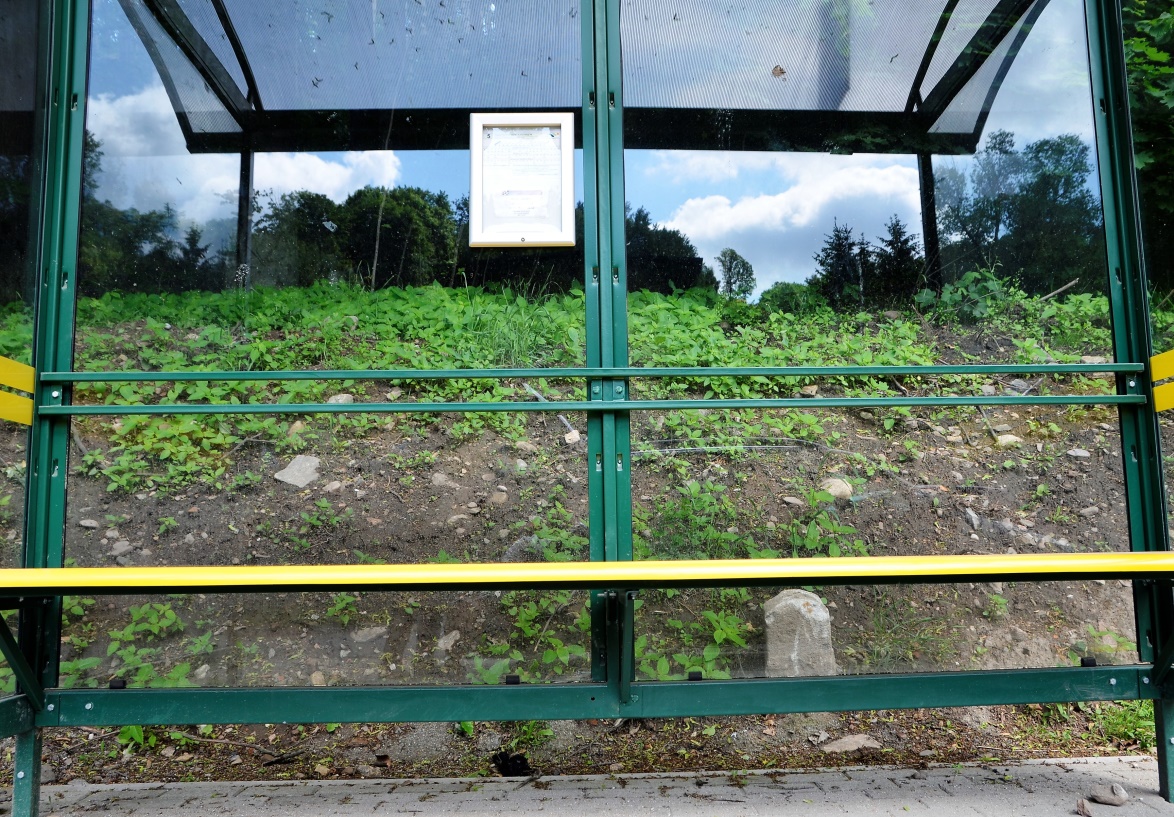
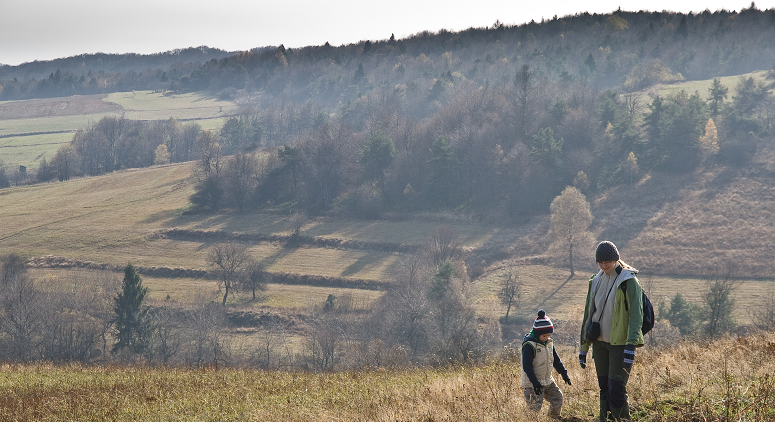
Our top 10 tips on how to be a good birdwatcher
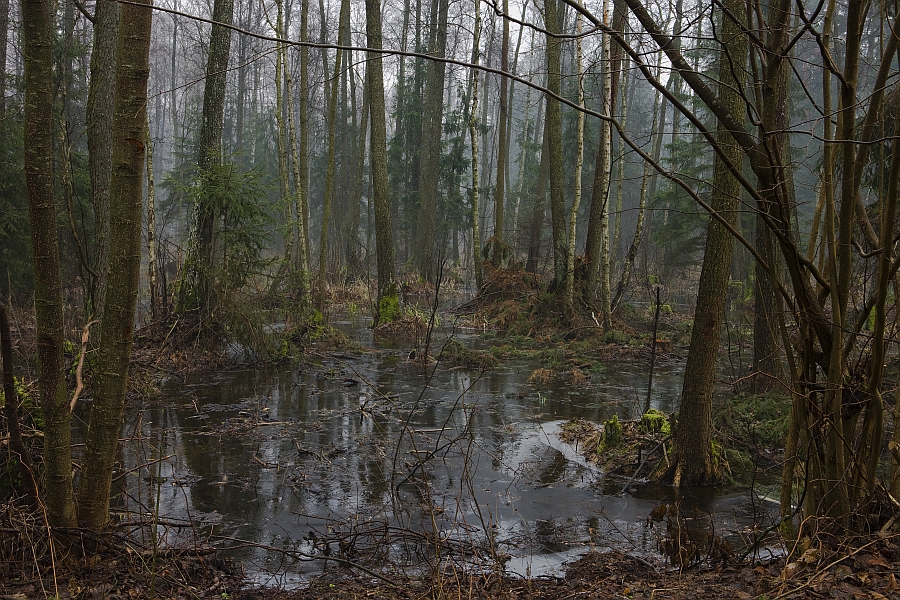
Kada vidimo ptića na podu odmah pomislimo kako je sam, bespomoćan, malen, promrzao, nespretan i paperjast... teško je odoljeti želji da ga se spasi.
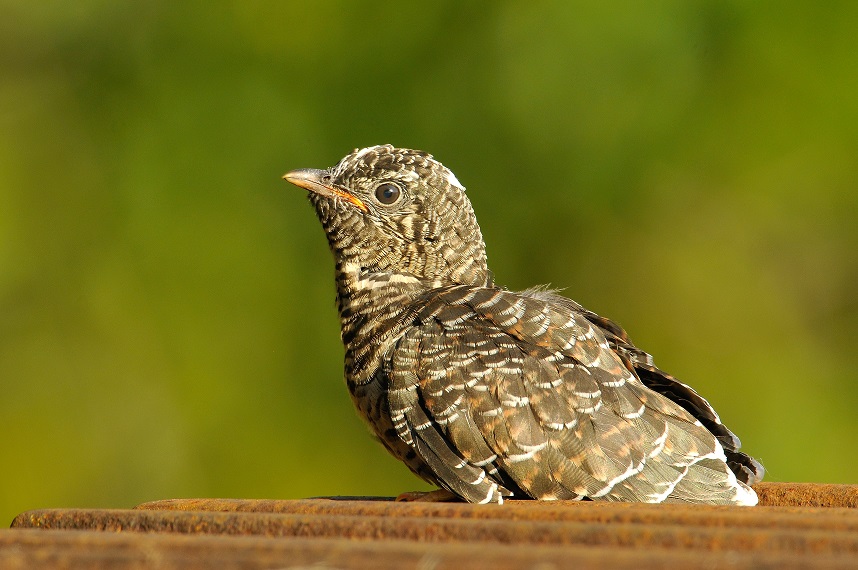
Na primjer, današnja djeca nisu u prilici da čuju zvuk kukavice u odnosu na svoje djedove, tj. prošle periode.
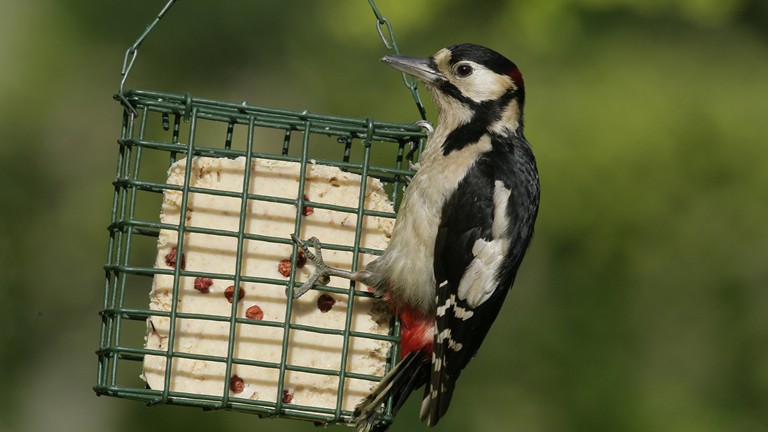
Ako iznesete pravu hranu u pravo vrijeme pomoći ćete lokalnim pticama da prebrode vrijeme kada postoji nedostatak prirodne hrane i da budu spremne za gniježđenje u proljeće.
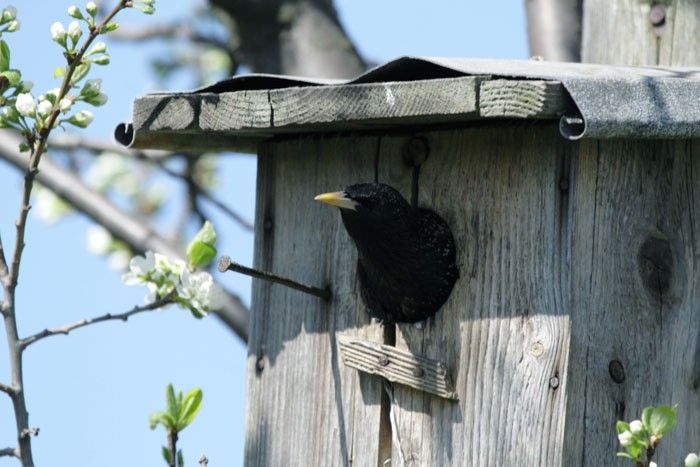
Neka proljeće oživi u tvom vrtu ili na balkonu svake godine!

Da li ste zabrinuti za štetu koja je načinjena lokalnom životinjskom svijetu ali ne znate šta da uradite povodom toga?
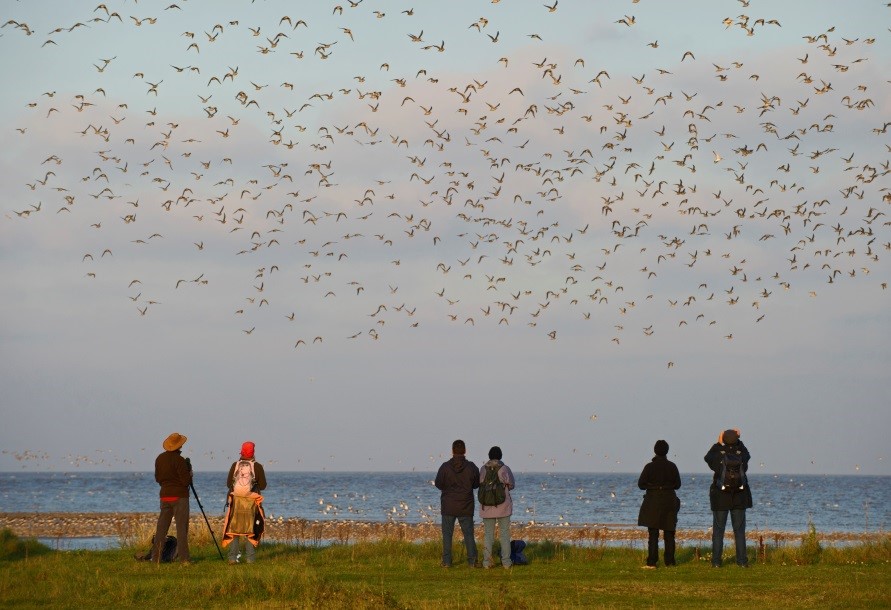
Put simply, citizen science is scientific research conducted by people who are not professional scientists. Some of the biggest discoveries in the world have been made by people without official scientific qualifications or funding.
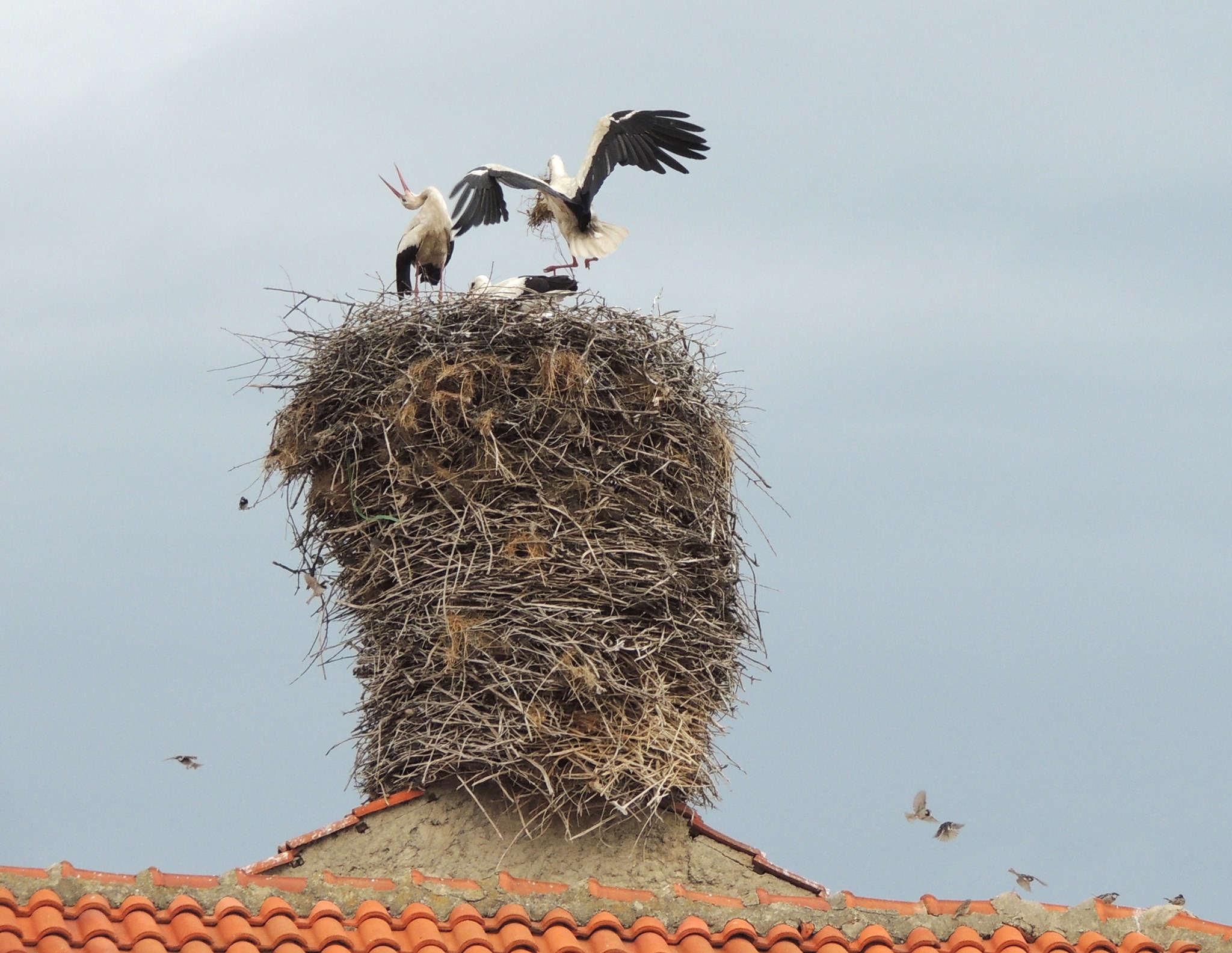
Kada rode skupljaju materijal za njihova gnijezda, oni mogu pokupiti mnoštvo stvari koje su predmeta koje je čovjek napravio ne shvatajući da one mogu biti opasne.
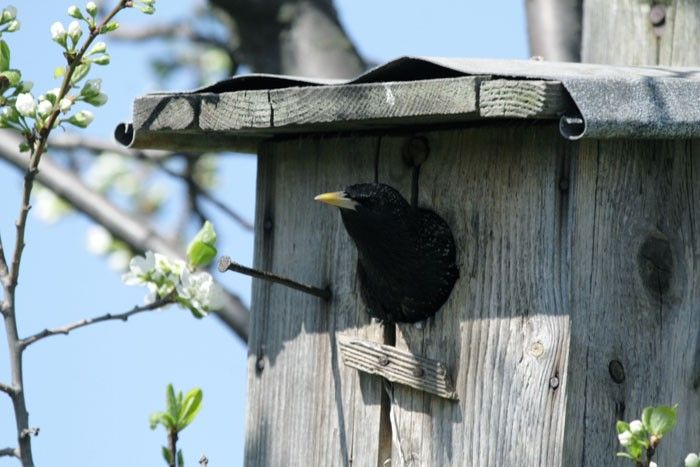
Mnoge ptice gnijezde u dupljama. Ali moderne metode sječe šuma i brige za sigurnost u gradovima dovode do toga da postoji sve manje šupljina u drveću u kojima ptice mogu da gnijezde.
